Webuzo - powered by Softaculous is a Single User Control Panel, which helps to deploy apps and more on the server. It can enable people to focus more on using applications rather than run around the clock maintaining them. This guide will go through how easily almost anyone including Uncle Joe can configure and install an SSL Certificate through the seamless Webuzo UI (User Interface). So, let’s get started.
- Step 1: Generating a CSR and Private Key
- Step 2: Order and Configure the SSL Certificate
- Step 3: Install the SSL Certificate on Webuzo
- Step 4: Check the SSL is working
- Troubleshooting and Further Configuration
Step 1. Generating a CSR and Private Key
1: Login to your Webuzo WHM with your root password through the default port (Generally:2004 or 2005) and navigate to the End-User Panel
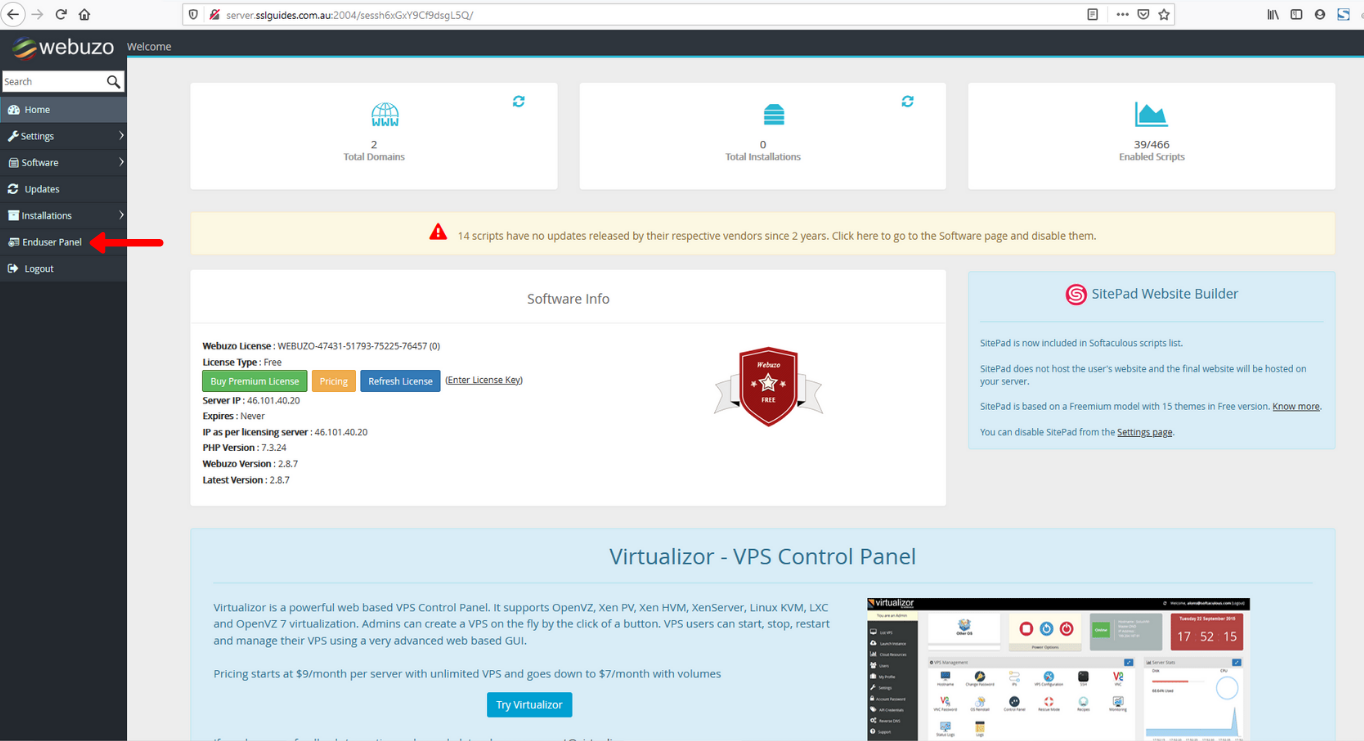
2: You need to access the Private Key section within Webuzo. This can be done by typing in "Private Key" in the Find functions search box at the top.
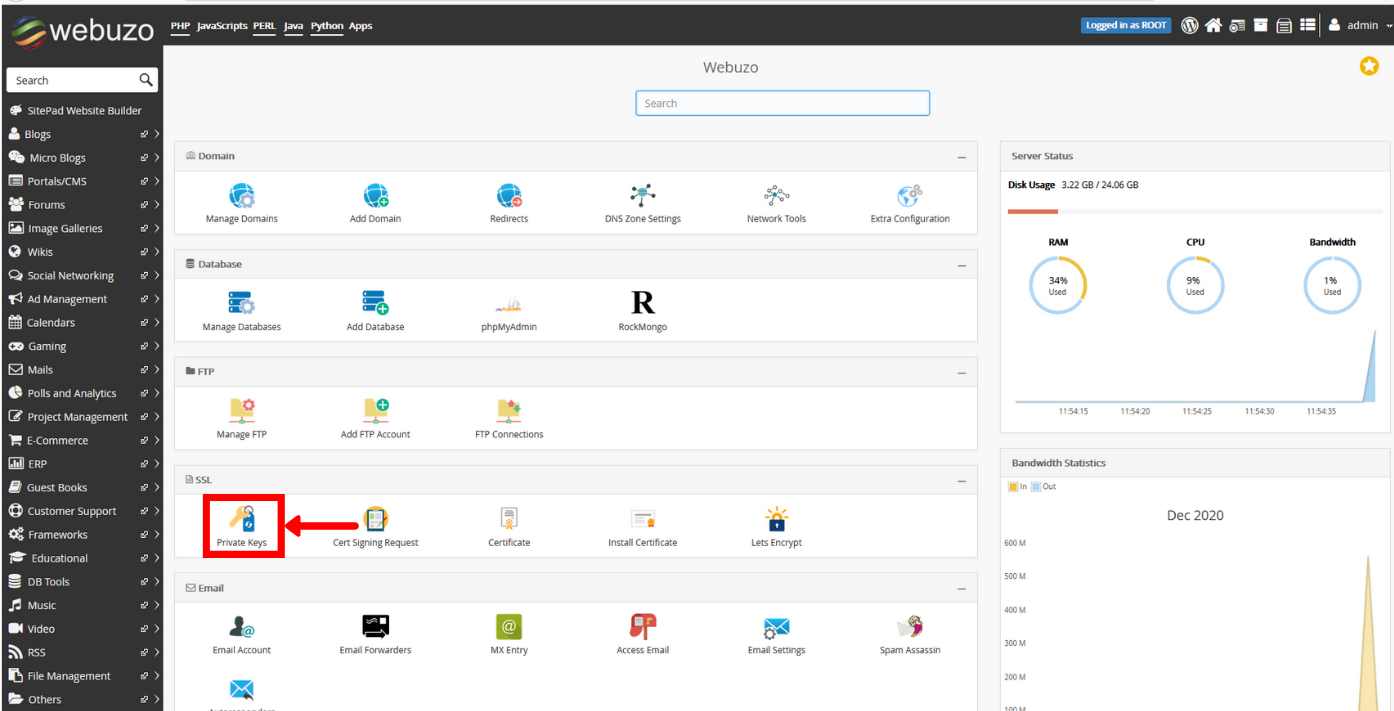
3: Scroll down again and Generate a Private Key
Description- Type in your domain name
Key Size - 2048 bits
and click on Create
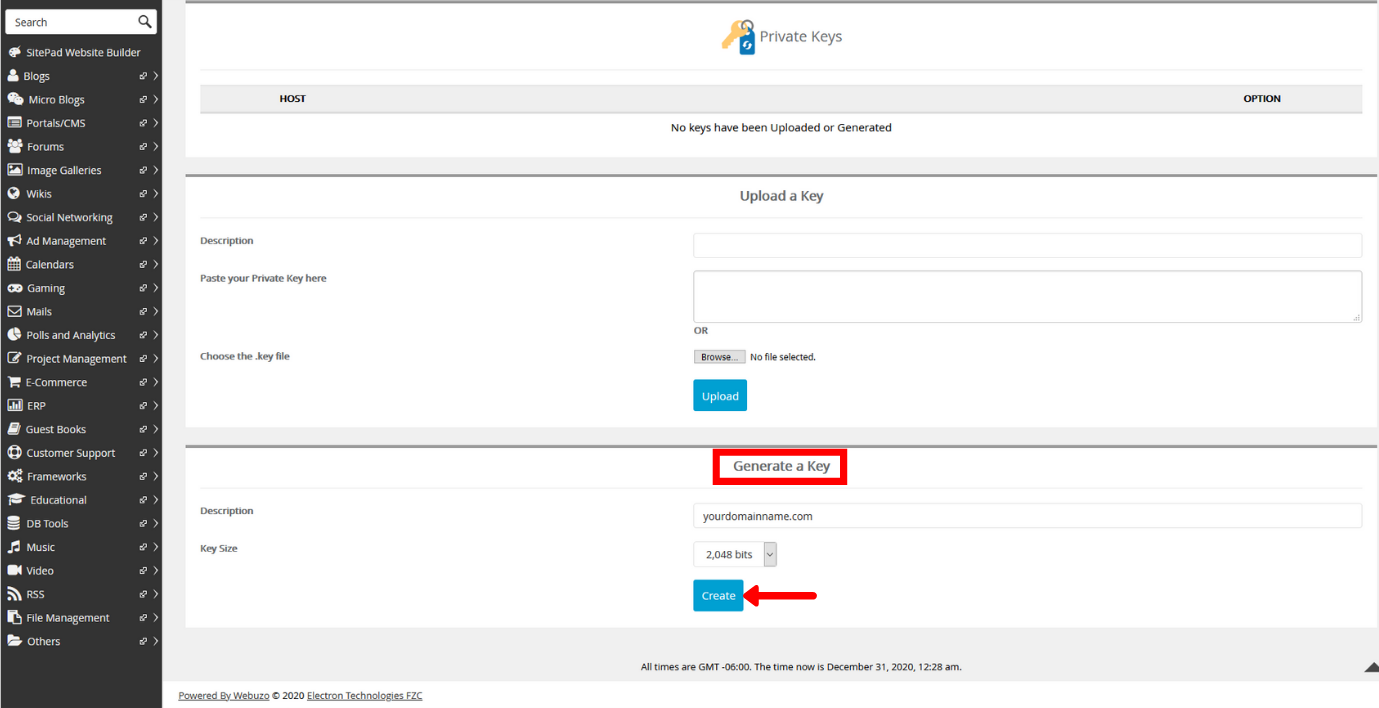
4: Go back to the User End Dashboard and navigate to the Cert Signing Request under SSL again. What is a CSR?
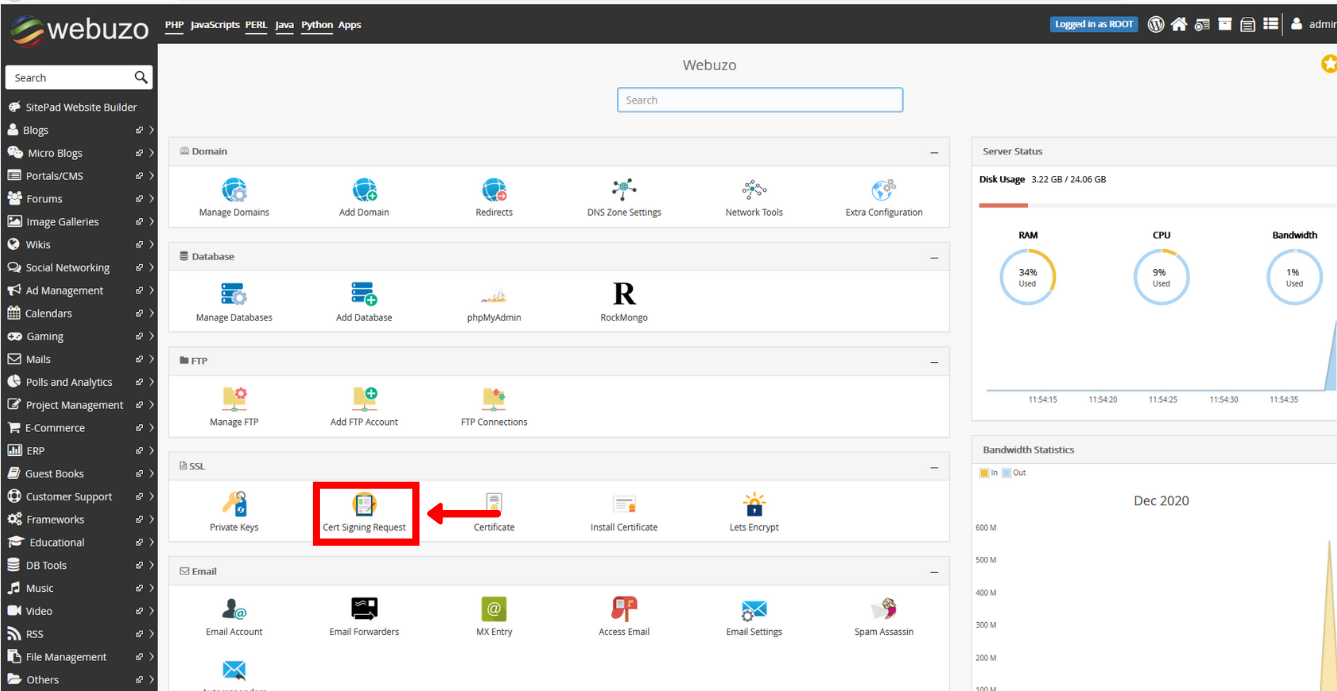
5: Fill in all your details to issue your CSR (Certificate Signing Request)
Key: Select the key which you just created.
Domain: Type in your domain name.
Country Code: 2 letter abbreviation of your country.
State: Full name of the state.
Locality: Full name of the city/town/locality.
Company Name: If you are a business; Enter your legal entity name. If you're not a business, any value entered will not be used in your certificate.
Company Branch: If you are a business; Write the appropriate division of your company. It is best to use something generic such as "IT".
Email: Enter your email address
Pass phrase: It is used to confirm the identity of the individual who requests the certificate. This is mandatory in case of Webuzo - Try to keep the passphrase safe somewhere.
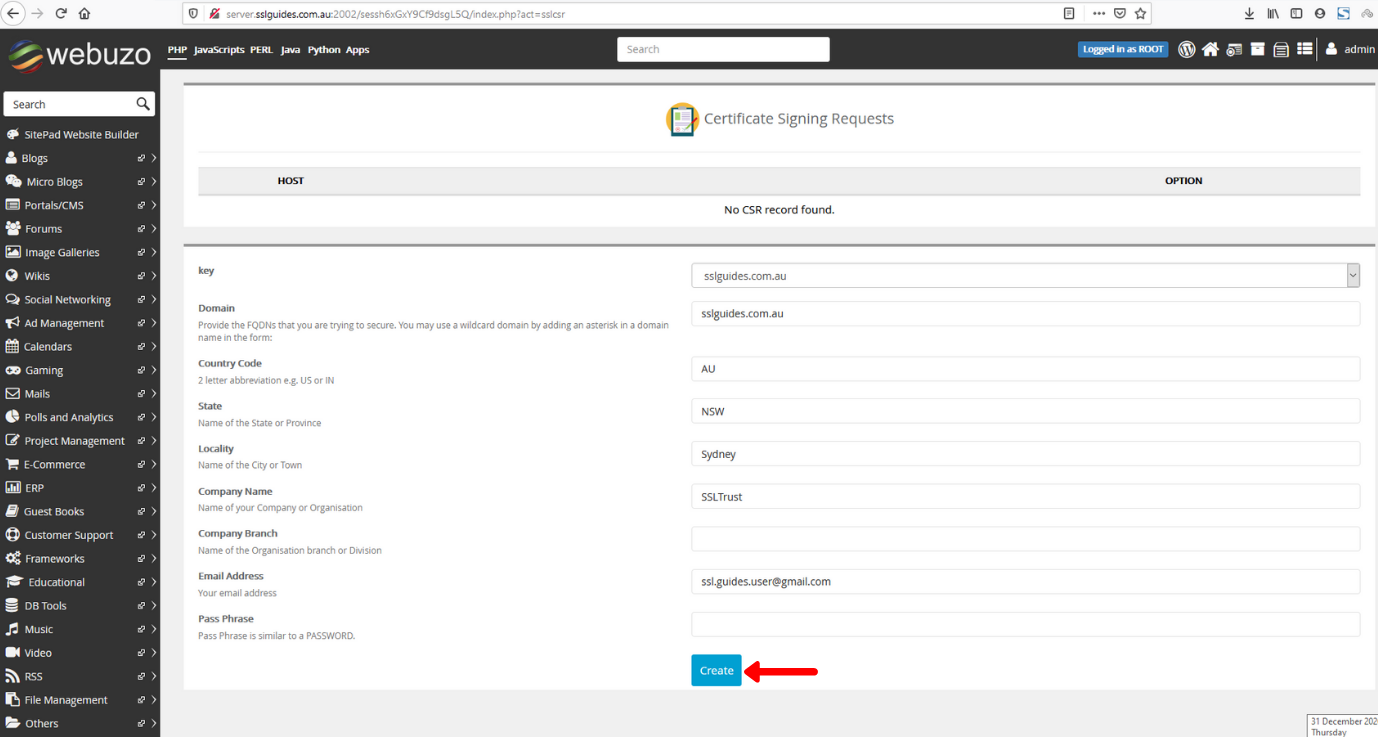
After you click the Create button, you will be presented with your CSR. This along with your Private Key will be saved within your Webuzo, to be used later.
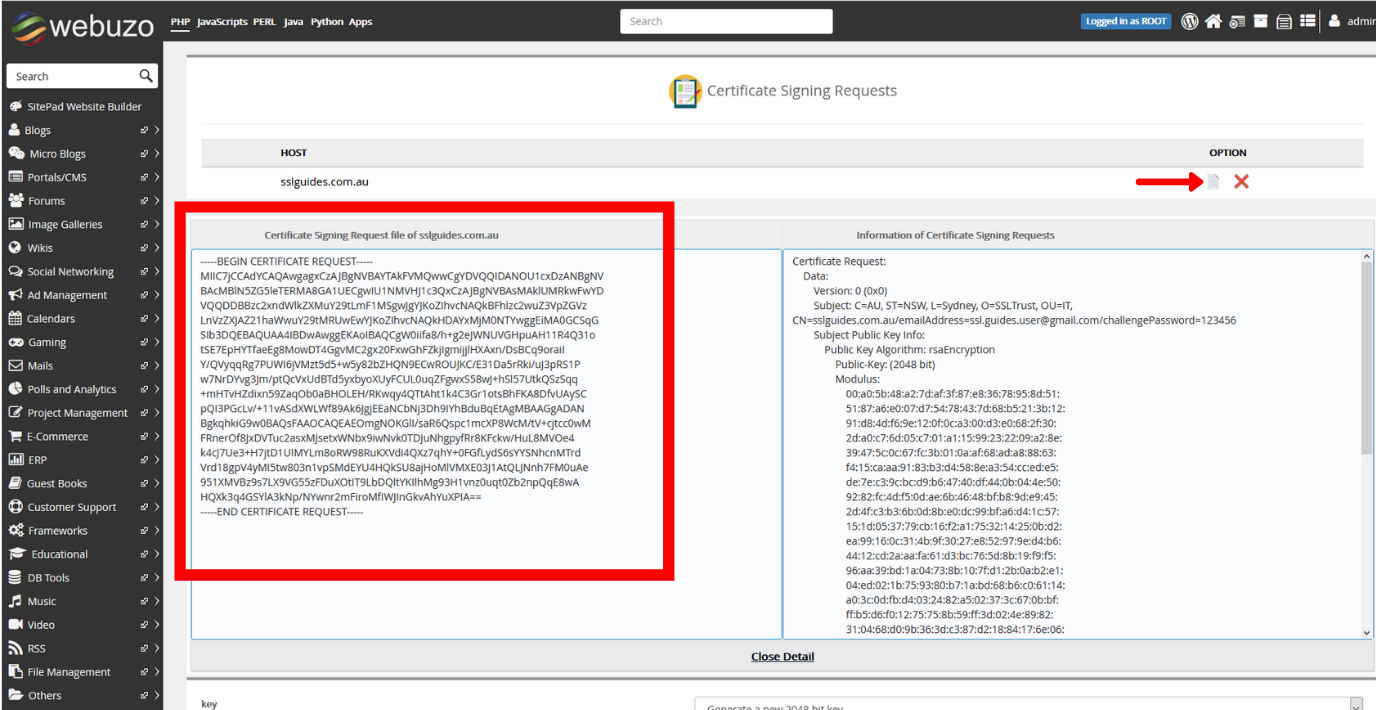
Please keep this window open as you will need to copy your CSR Code to be used shortly.
Step 2. Order and Configure the SSL Certificate
Now we need to order an SSL Certificate. If you visit our SSL Certificates List page, you will have a selection of Certificates you can order. If you have a simple website wanting to secure the one domain, you will be fine to use a Comodo PositiveSSL. If you are a business website you may want to look at using a Business SSL, we recommend a Thawte SSL such as the Thawte Web Server SSL.
If you require any assistance with selecting an SSL Certificate, please feel free to contact our sales team and they will be happy to assist.
1: Order the SSL and complete the checkout.
2: Once you have completed the SSL Certificate Purchase you can begin the configuration process. This can be started by going into your SSLTrust account and managing your recent purchase.
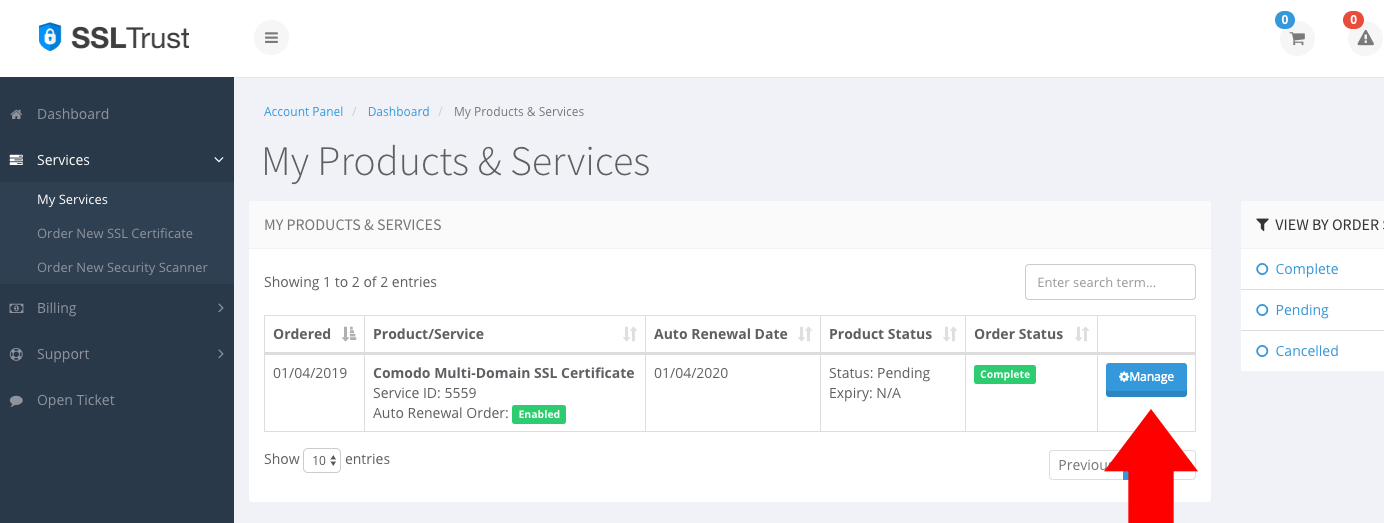
You then will need to click the Submit Configuration button to begin the configuration process.

3: You now need to paste in the CSR you generated in your Webuzo Web Hosting. This includes the lines:
-----BEGIN CERTIFICATE REQUEST---- -----END CERTIFICATE REQUEST-----

Select OTHER for your Web Server Type.

You will need to also enter the Site Administrator Contact Information.
This information is to be of the individual who is responsible to approve and SSL Certificate. If it is a business SSL, it needs to be a contact under the business.
The Technical Contact Information is the details of the individual responsible for the installation and management of the Certificate.
If you have ordered a business SSL, you will also be required to enter your business details. These should be the correct address and phone number and legal entity name. They will be required to be validated by the Certificate Authority, any mistakes will cause delays. More information on Business Validation can be found here.
4: Click Continue to go to the next Step. Here you need to select the Authentication Method to validate your domain name. This is required to prove you own the domain name and have permission to issue an SSL Certificate for the domain.

Select the method that will be the easiest for you to use; File-Based Authentication ( HTTP / HTTPS ), CNAME Based Authentication ( DNS ) or Certificate Approver Email.
If you have access to one of the listed emails, this can be the quickest method
Click Continue/Submit to finish the Configuration process.
After you complete the domain validation via your selected method, your SSL will be issued. If you ordered a Business SSL, you will need to wait for the Certificate Authority to complete the Business address and phone validation. If the validation has not progressed, or you have not received your Certificate after some time, please contact our support team so we can check on its status.
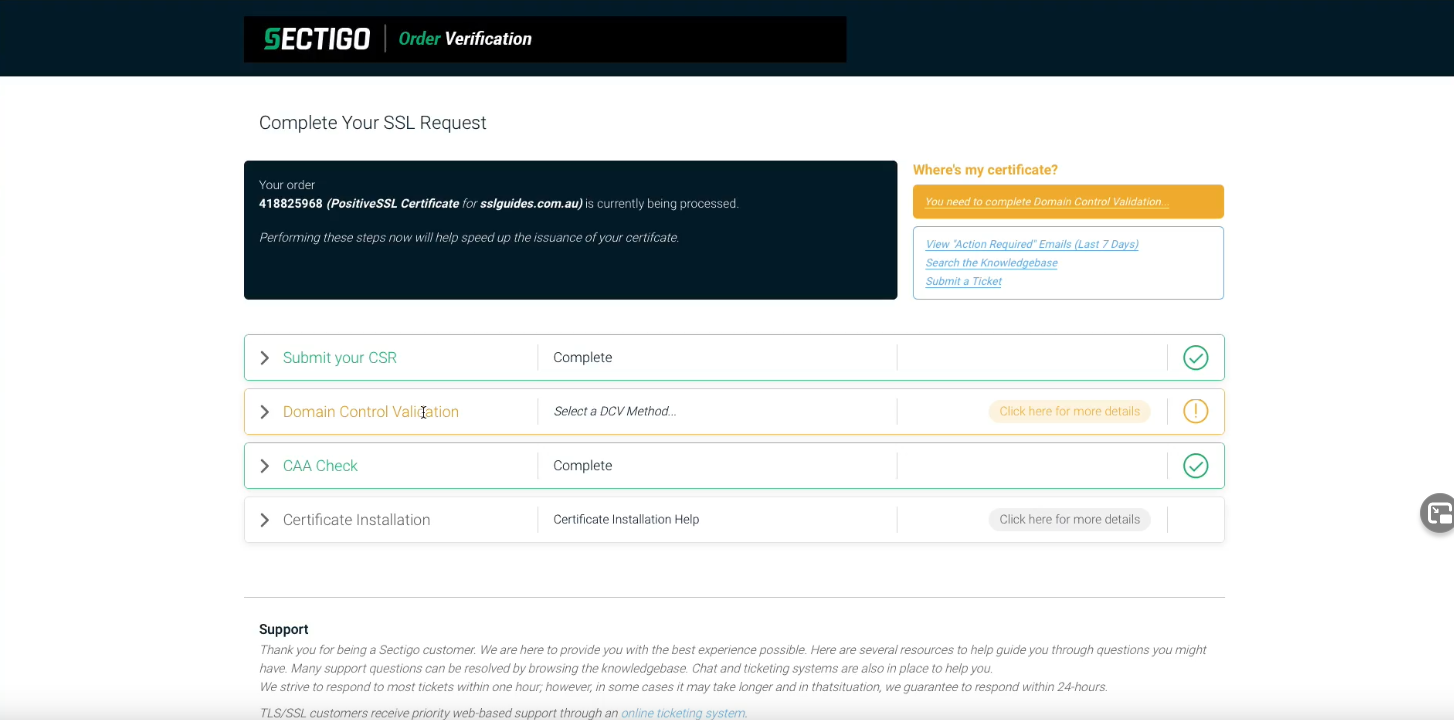
Step 3. Install the SSL Certificate on Webuzo
When your SSL Certificate has been issued, you will be emailed the Certificate Directly from the Certificate Authority. You can also download it from your SSLTrust Portal. Downloading it from the SSLTrust Portal is a good option as we format the certificate in an easy to use way.
Again; View your certificate management page within SSLTrust

1: Click on the Manage button and collect/download your certificate
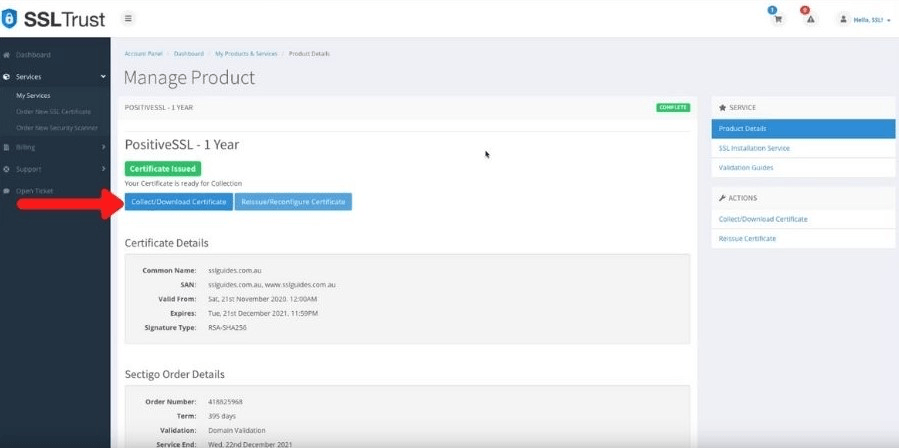
2: Go to the first column and click on copy to clipboard
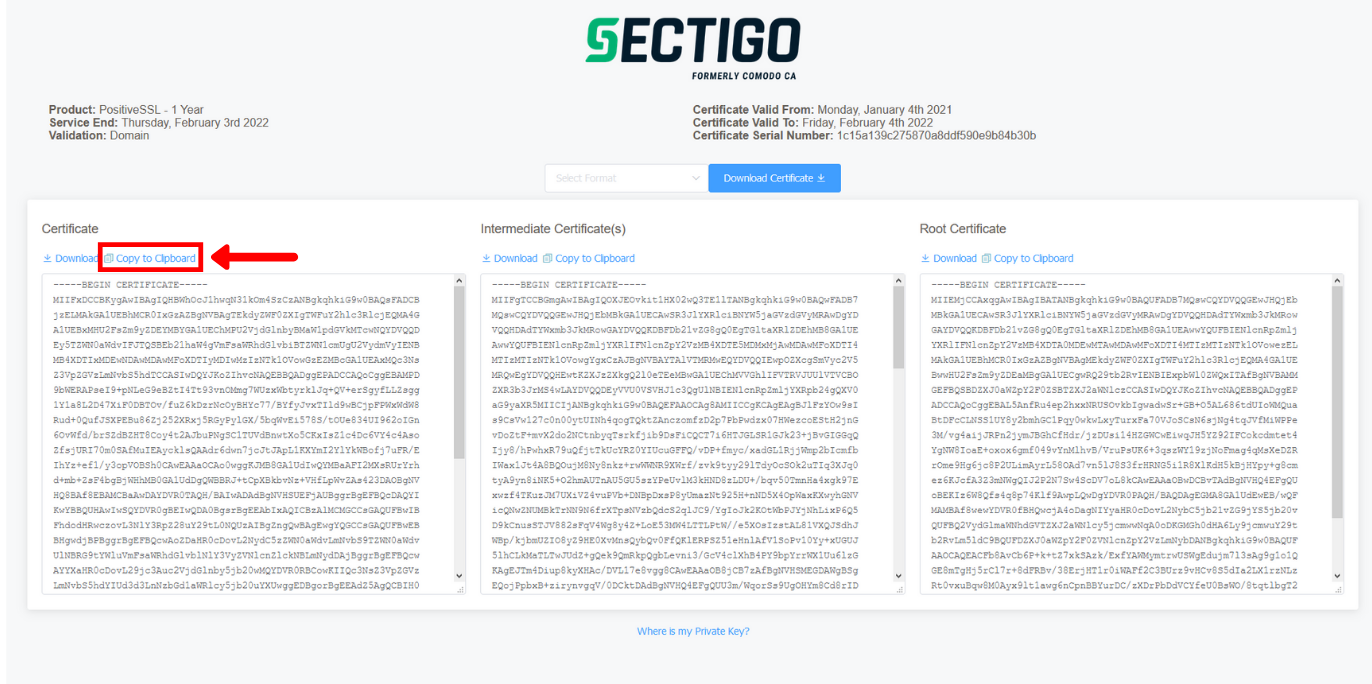
3: Head back over to your Webuzo User-End Control Panel and go to SSL -> Certificate
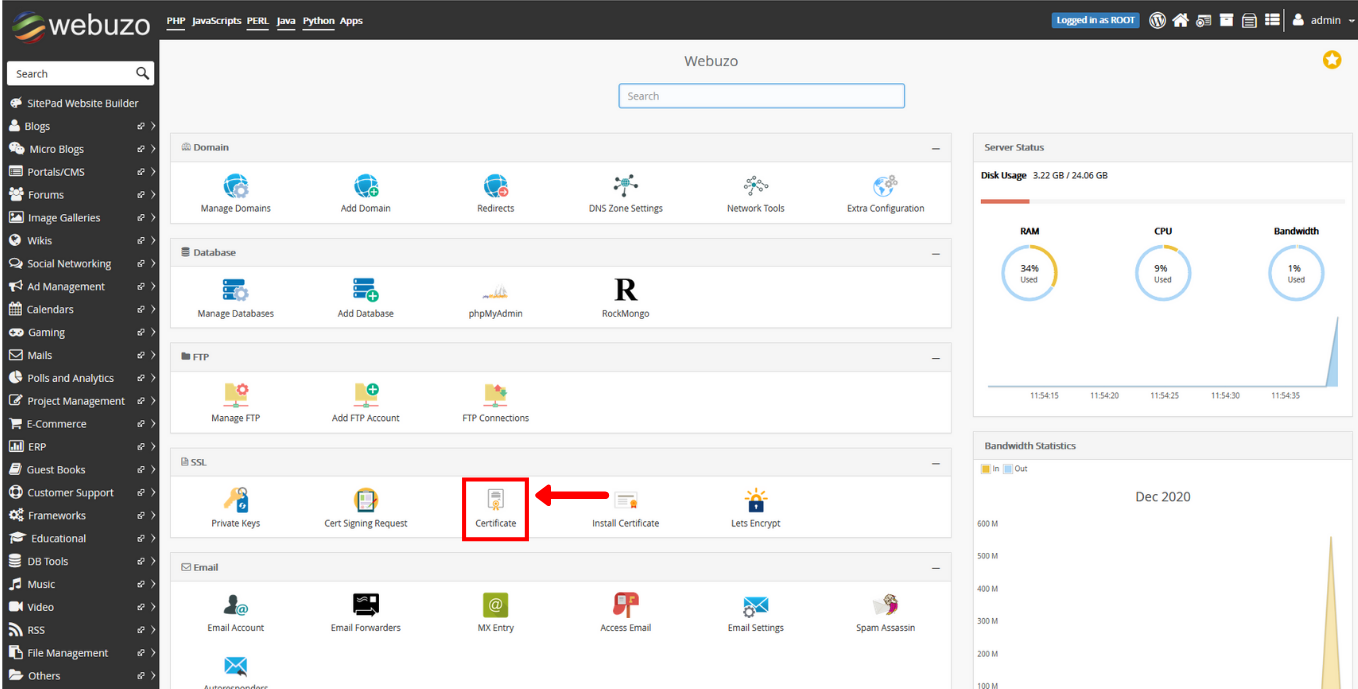
4: Paste your Certificate in the Dialog Box and then click on Upload
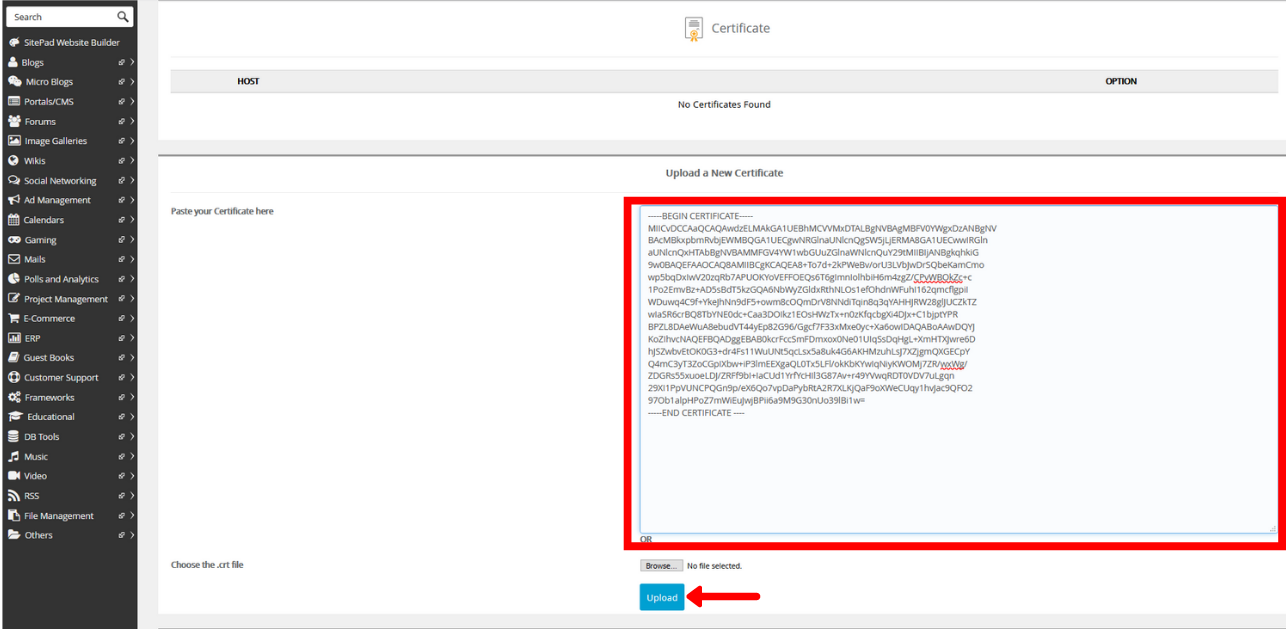
5: Head over to the Dashboard again and navigate toSSL-> Install Certificate .
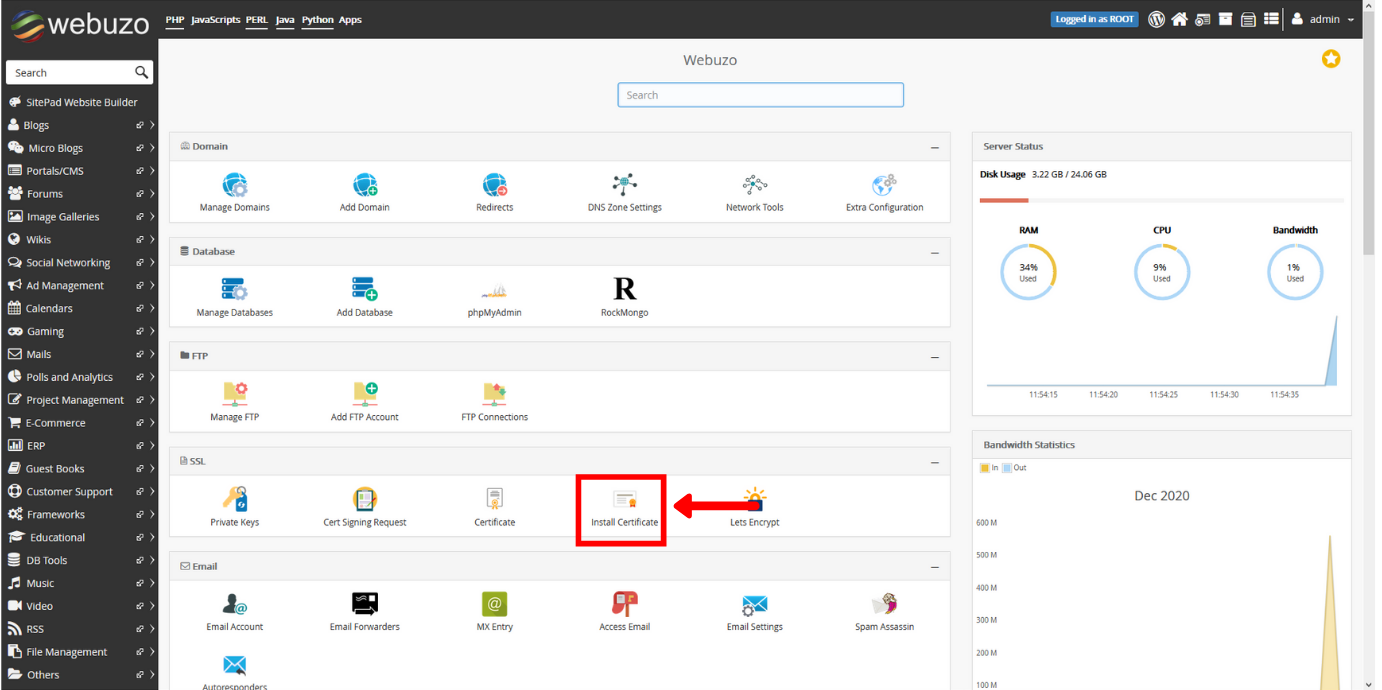
6: Select your domain name and click on Fetch. If the details do not auto-fill, you will need to manually paste in your Private Key and Certificate.

In some cases, you will also have to copy and paste your CABUNDLE (Intermediate Certificate) - The chain is required to improve compatibility of the certificates with web browsers and other kind of clients so that browsers recognize your certificate and no security warnings appear.
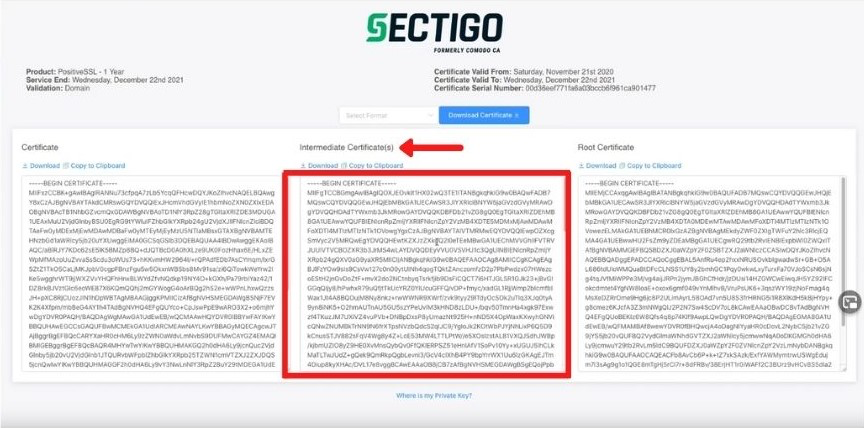
Click on the Install button after pasting in the contents
Step 4. Check the SSL is working
It is a good idea to go to your website and see if it works via https://www.yourdomain.com
We also recommend you use this tool to check the install has been completed successfully: www.ssllabs.com/ssltest/
You may need to get your web developer, or update your website yourself, to make sure all files use https:// and all links to your site and within your website use https://
If you require any assistance with your SSL Installation please contact our friendly support team.

Troubleshooting and Further Configuration
1: TURN OFF TLS 1.1 AND LOWER VERSIONS
If you do not get an A rating on the SSLLabs test, make sure to have installed the CA BUNDLE (Intermediate) Certificate and only allow TLS 1.2 and higher to functionTo view and change the supported version of TLS, you will have to:
- Go the Webuzo User-End Panel and scroll down to the Configuration bar and click on Apache
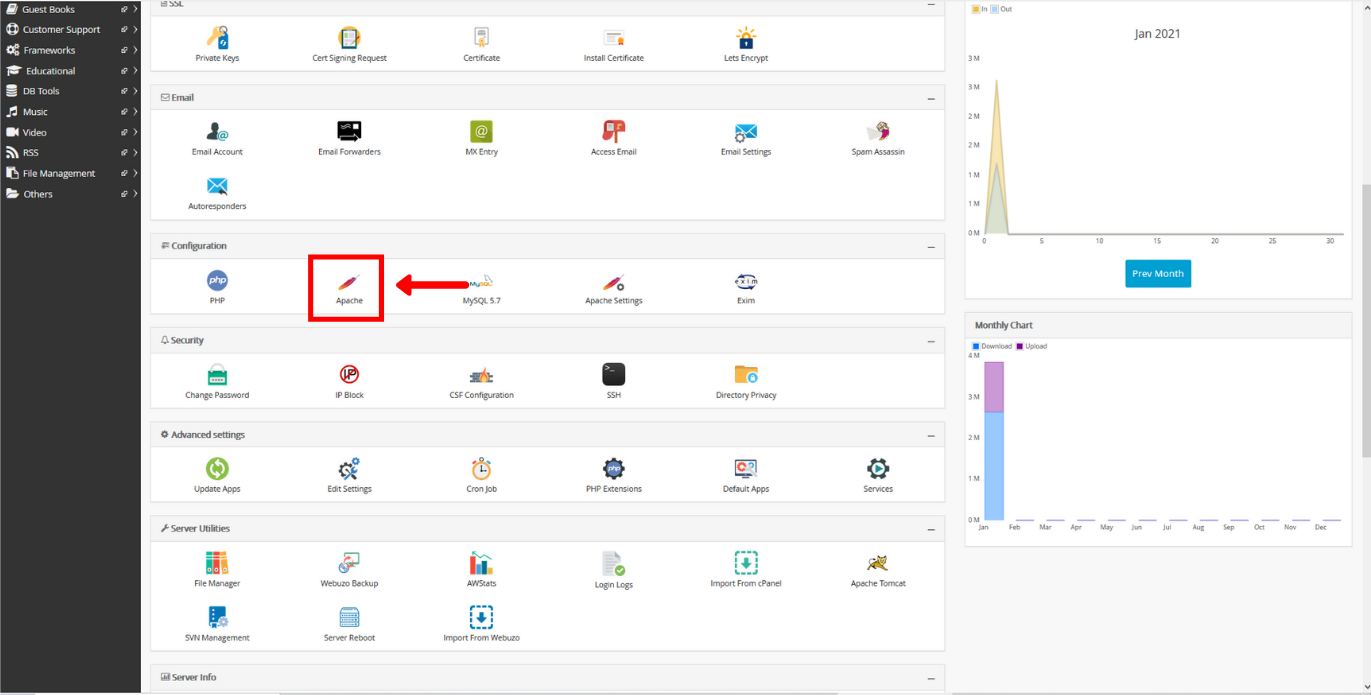
- Find the #SSL Protocol command near the bottom (line 1000 in this case)
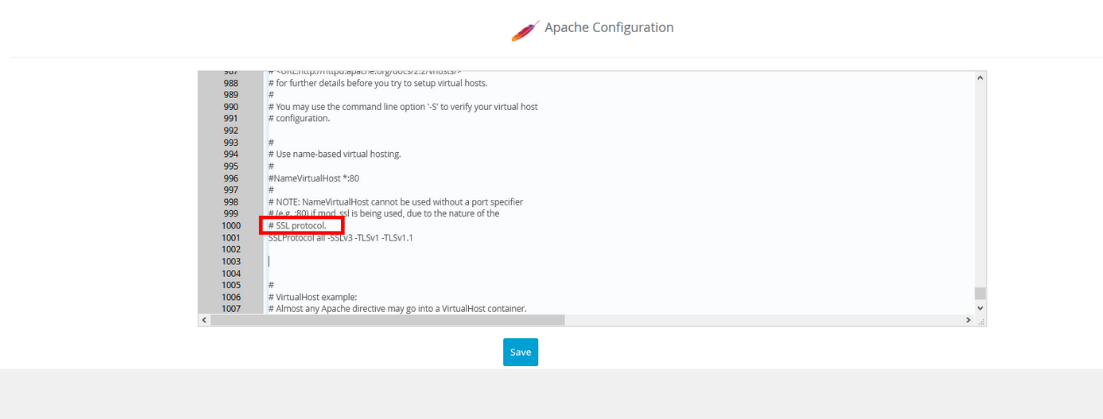
Add this command under that line and click on Save
SSLProtocol all -SSLv3 -TLSv1 -TLSv1.1
- Now head over to the dashboard again and navigate to Advanced Settings -> Services
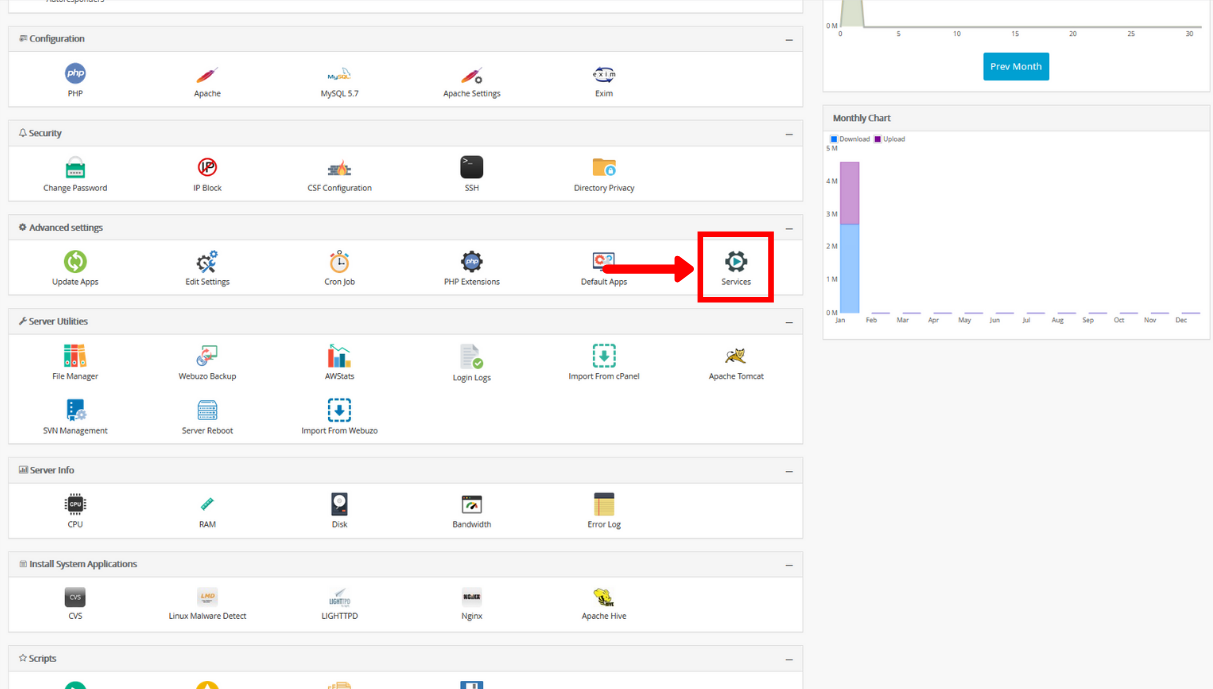
- Click on Restart Apache

2: HOW TO FORCE HTTPS REDIRECTS MANUALLY AND CHOOSE YOUR SITE VERSION
Note:- In the code below, please replace HTTPS with HTTP if you want users to be directed to the old (unsecure) version of your site.
As Webuzo’s interface does not allow redirects for the same domain and does not have a button for forcing redirects, you will have to do it manually. To make either changes, you will have to access/create the .htaccess file via FTP/SSH and make the following changes.
The file can be found/created at this location /var/www/html/.htaccess
To remove www from your URL websitem use this code in your .htaccess file:
RewriteEngine On
RewriteCond %{HTTPS_HOST} ^www\.(.+)$ [NC]
RewriteRule ^(.*)$ https://%1$1 [R=301,L]
To include www from your URL website, use this code in your .htaccess file:
(Where YourSite.com must be replaced with your URL)
RewriteEngine On
RewriteBase /
RewriteCond %{HTTPS_HOST} ^YourSite.com$
RewriteRule ^(.*)$ https://www.yourSite.com/$1 [R=301]
RewriteCond %{REQUEST_fileNAME} !-d
RewriteCond %{REQUEST_fileNAME} !-f
RewriteRule ^(([^/]+/)*[^./]+)$ /$1.html [R=301,L]
